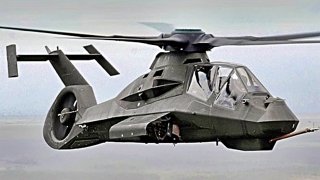RAH-66 Comanche: The Army’s $7 Billion Stealth Helicopter That Failed
The RAH-66 Comanche was a significant attempt to create a stealth helicopter, designed with a smooth fuselage, Radar-Absorbent Material (RAM), and infrared-suppressant paint.
Summary and Key Points: For several generations, American aerospace designers have focused heavily on stealth technology, producing stealthy fighters and bombers like the F-22 Raptor and B-2 Spirit. However, helicopters, despite their critical roles in attack, reconnaissance, and special operations, have not seen the same advancements in stealth.
-The RAH-66 Comanche was a significant attempt to create a stealth helicopter, designed with a smooth fuselage, Radar-Absorbent Material (RAM), and infrared-suppressant paint.
-Despite the promise, the program was ultimately canceled due to technological and financial challenges, though the concept of stealth helicopters remains valuable for covert military operations.
For the the last several generations, American aerospace designers have invested heavily in stealth technology. The majority of new fighters and bombers that roll off the assembly plant are stealth airframes, with radar cross sections comparable to that of a bumble bee. Examples of new stealth aircraft include the F-117 Nighthawk, the B-2 Spirit, the F-22 Raptor, the F-35 Lightning II, and the B-21 Raider. But as one may have notice, the list does not include any helicopters, despite the use of the rotary-winged aircraft in attack, reconnaissance, and special operations roles which stealth capabilities would be quite useful.
Conceptually, a stealth helicopter makes a lot of sense. US war planners thought so, at least, which is why considerable resources were dedicated to building the RAH-66 Comanche, a stealth attack helicopter. The Comanche never quite panned out, but you can’t fault the effort.
Squaring a Circle with Comanche Helicopter
Helicopters are inherently unstealthy. The turbine exhaust system is cacophonous; the tail rotor is loud; the fuselage vibrates vigorously during flight. Helicopters are simply not well suited for moving through air and space undetected. Yet, given the inherent challenges of sanding down the non-stealth corners of the rotary-winged aircraft, the fact that aerospace designers were willing to try speaks to the value that a stealth helicopter would add.
Stealth characteristics would be helpful for a helicopter in any situation in which you did not want the helicopter detected – that is to say, in most military operations. Consider how helicopters are used: fire support, troop transport, and reconnaissance. Nearly every facet of helicopter operations would benefit from stealth technology. And of course, helicopters are a central component of special operations, which are, almost innately stealthy.
Consider the raid on Osama bin Laden’s compound – an example of why the US might want stealth helicopter technology. The US needs to surreptitiously infiltrate a sovereign state (because the US did not have permission to enter the sovereign state), locate an approximate location (bin Laden’s compound), and deliver a SEAL Team. The needs of the mission all demanded a helicopter – aside from the need to enter the sovereign state undetected; which would require stealth.

Fortunately, the US happened to have a stealth Blackhawk prototype on hand, two of which were deployed for the raid. This article isn’t about the bin Laden raid or the stealth Blackhawk, but rather a demonstration of why the US might be interested in developing a stealth helicopter like the RAH-66.
Developing the RAH-66
The RAH-66 made a lot of sense on paper, prompting the US Army to invest $7 billion dollars on the program between 1996 and 2004. The RAH-66 was slated to replace the OH-58 Kiowa, a scout helicopter that often attracts small-arms fire. Naturally, the Army would have appreciated a scout helicopter with the ability to move about unseen.
Two Comanches were built, with a smooth fuselage, Radar-Absorbent Material (RAM) coatings, and infrared-suppressant paint. The Comanche was also outfitted with an all-composite, five-blade rotor, which churned more softly than other helicopter rotors. But the Comanche never entered production, because “aspects of Comanche’s technology were deemed too risky (i.e. immature i.e. hadn’t been developed i.e. didn’t exist),” wrote Dan Ward for TIME.
The Comanche was a financial flop. But you can appreciate why the Army may have wanted such a stealthy helicopter.
About the Author: Harrison Kass
Harrison Kass is a defense and national security writer with over 1,000 total pieces on issues involving global affairs. An attorney, pilot, guitarist, and minor pro hockey player, Harrison joined the US Air Force as a Pilot Trainee but was medically discharged. Harrison holds a BA from Lake Forest College, a JD from the University of Oregon, and an MA from New York University. Harrison listens to Dokken.
Image Credit: Creative Commons and/or Shutterstock.


